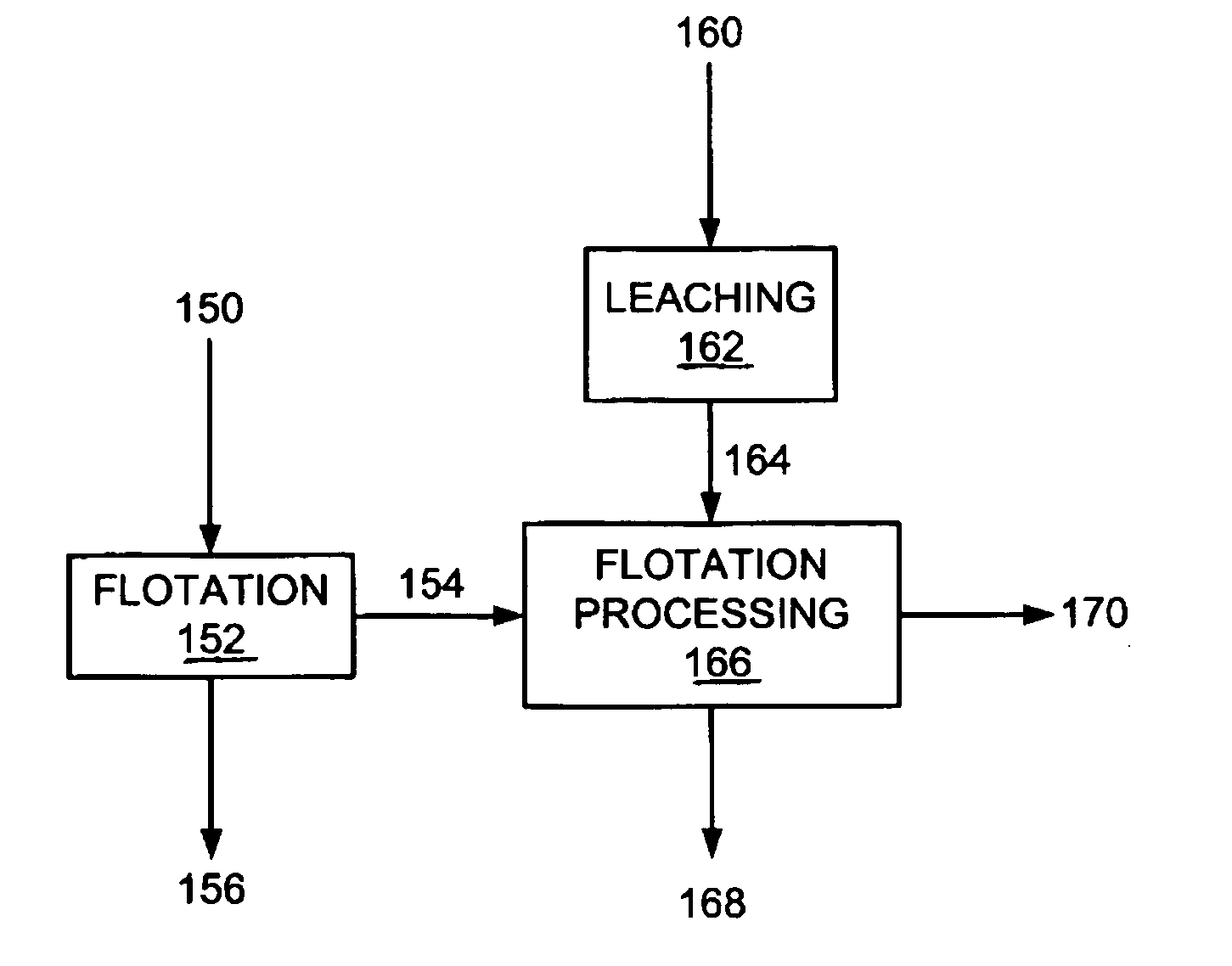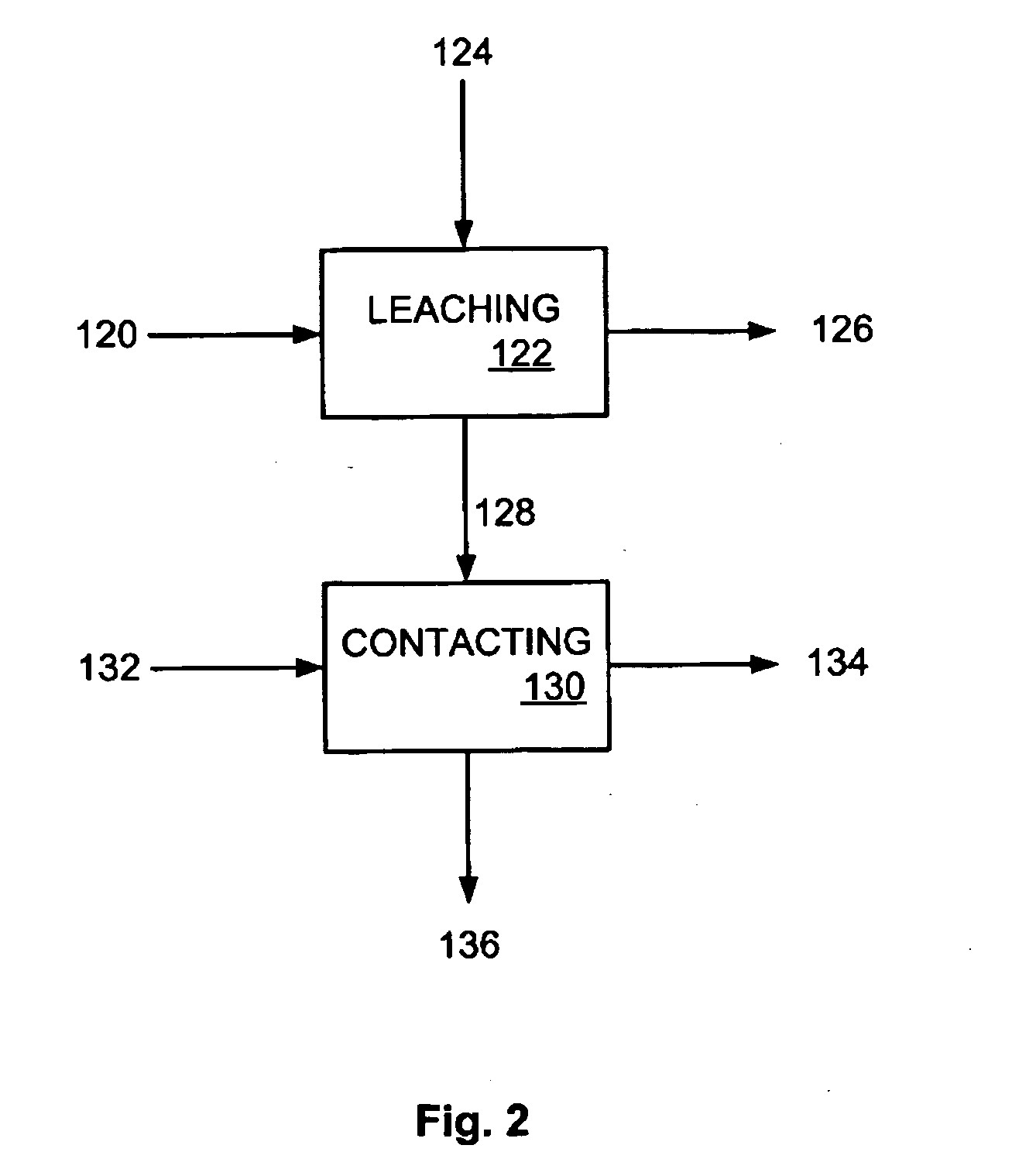Flotation processing including recovery of soluble nonferrous base metal values
a technology of nonferrous base metal and flotation processing, which is applied in the direction of nickel compounds, dissolving, separation processes, etc., can solve the problems of low copper recovery, high cost of solvent extraction process, and inability to achieve economic effects, reduce the amount of reactive oxygen, and reduce the presence of reactive oxygen
- Summary
- Abstract
- Description
- Claims
- Application Information
AI Technical Summary
Benefits of technology
Problems solved by technology
Method used
Image
Examples
examples
[0045] A sample of coarse copper-gold sulfide ore from Papua New Guinea is stage crushed to minus 10 mesh and then kept frozen for storage. The ore is highly susceptible to oxidation and it is anticipated that as much as 10 percent of the copper content of stockpiled ore may be directly acid leachable from stockpiled ore. Preparation time for the ore is kept short to minimize exposure to air. Two head samples of the crushed ore, identified respectively as Splits A and B, are oven dried, pulverized, and assayed. A third head sample, identified as Split C, is air dried and assayed for total copper and acid soluble copper. Representative assay information for Splits A, B and C is summarized in Table 1. From assays of Splits A and B, the ore sample has a high sulfide sulfur content, averaging 10.1%. Also, only a small portion of the gold content is directly cyanide leachable. From assays of Split C, it is seen that the sample of the ore contains a significant quantity of acid soluble co...
PUM
| Property | Measurement | Unit |
|---|---|---|
| Fraction | aaaaa | aaaaa |
| Percent by mass | aaaaa | aaaaa |
| Percent by mass | aaaaa | aaaaa |
Abstract
Description
Claims
Application Information
 Login to View More
Login to View More - R&D
- Intellectual Property
- Life Sciences
- Materials
- Tech Scout
- Unparalleled Data Quality
- Higher Quality Content
- 60% Fewer Hallucinations
Browse by: Latest US Patents, China's latest patents, Technical Efficacy Thesaurus, Application Domain, Technology Topic, Popular Technical Reports.
© 2025 PatSnap. All rights reserved.Legal|Privacy policy|Modern Slavery Act Transparency Statement|Sitemap|About US| Contact US: help@patsnap.com



